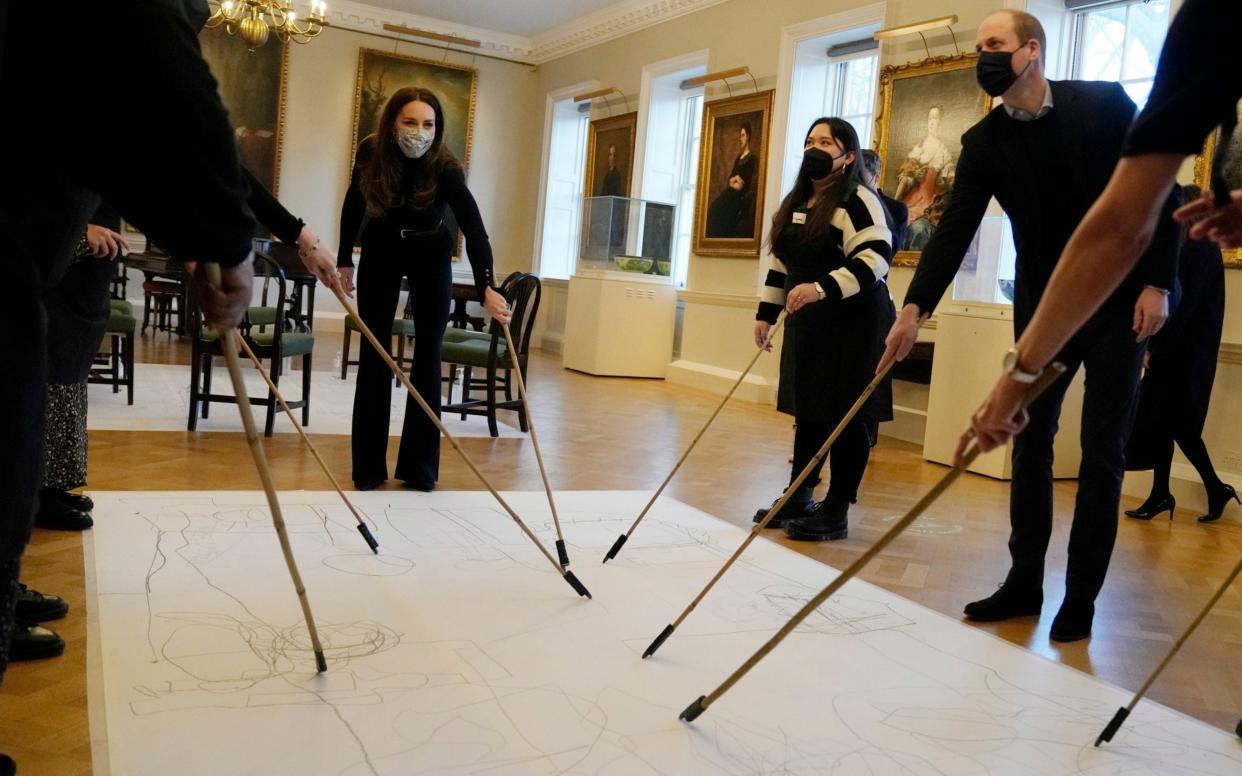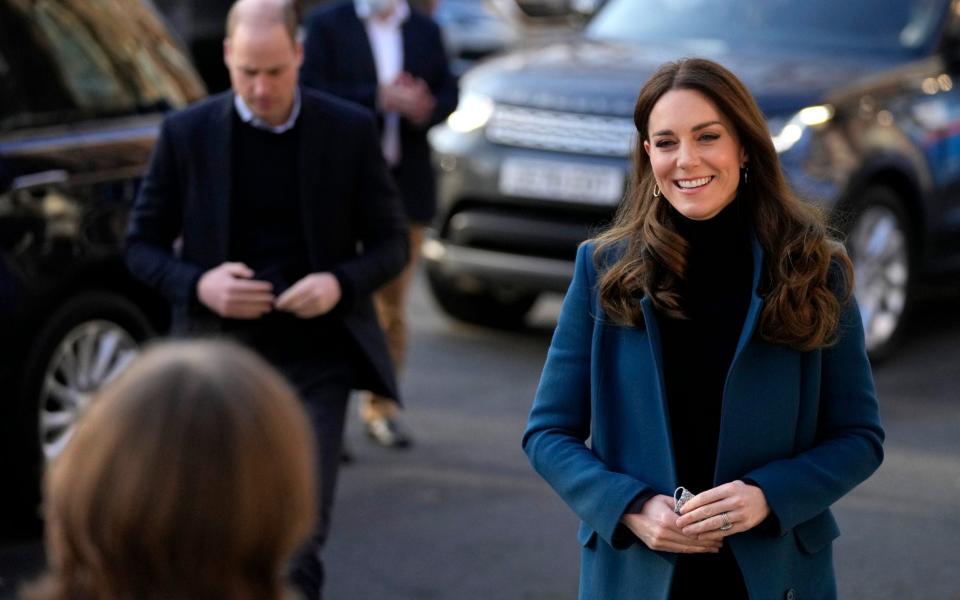Children moved around in care often form shallow relationships as adults, warn the Cambridges

- Oops!Something went wrong.Please try again later.
The Duke and Duchess of Cambridge have argued for more stability for children in care, warning the “emotionally exhausting” process of moving too often puts them at risk of “short and shallow” relationships as adults.
The Duke, visiting the Foundling Museum in London, said the problems for children growing up without a stable home foreshadowed those of homeless adults, who “go through hoops and hurdles, tell so many people in authority and nothing changes”.
The couple visited the museum in their first public engagement since their Christmas holidays, spending time with young people who have left the care system and are now training to work at the museum to help others.
They took part in “ice-breaker” activities, which saw them join a drawing session with three-foot-long pencils to create a priceless piece of artwork from a future king and queen.
Duke asked if he supports Prince Andrew
As they left the engagement, the Duke ignored a question shouted from Sky News as a reporter asked him: “Do you support Prince Andrew?”
The Foundling Hospital, the UK’s first children’s charity, was created in 1739 as a home for children whose mothers could not keep or care for them.
The Duchess has made several visits previously.
Joining a roundtable meeting on Wednesday, the Duchess asked experts: “From your experience what makes the difference between a young person succeeding after leaving foster care and when they do not?”
They heard about “challenges for young people” when they regularly move home and are sometimes exploited by the criminal world.
The Duke added: “If you keep moving a child around when they are an adult their relationships are so short and shallow.”
Emotionally exhausting
The Duchess said she was concerned that without providing stable homes for children they risk being moved around and having to “tell their story again and again”.
“That may become emotionally exhausting to tell the story again and again,” the Duke said.
“We’ve had that in the mental health side of things; people end up on the street, go through hoops and hurdles, tell so many people in authority and nothing changes.
“You have to get to them a lot earlier so they don’t have to keep doing this.”
The couple added they were worried about the “consistency in care”.

They also spoke with Kriss Akabusi, the Olympic athlete, Lemn Sissay, the poet, and Allan Jenkins, editor of Observer Food Monthly, who told the Duke and Duchess their experiences of growing up in care.
Akabusi said he found leaving care at 16 “very traumatic”, having “enjoyed the stability”.
“It was a saviour for me,” he said.
Kate replied: “You are petrified leaving for independence”.
The Cambridges then joined women who had previously been in care for an “ice-breaker” activity armed with three-foot-long pencils and a large piece of shared paper.
Royal artwork not for sale
The task involved drawing on a canvas while looking only at the people in front of them without looking at what they were drawing on the floor.
The Duchess, who has a degree in art history from the University of St Andrews, laughed as she struggled with the creation, which looked like a vast doodle when it was finished.
The Duke laughed, and said: “I enjoyed it. The kids would really enjoy that.”
Viewing their masterpiece, he added: “That’s beautiful.”
The Foundling Museum erected a barrier around the work once it was finished, and plans to keep it in storage before potentially finding a way to display it in the future.
Despite the rare example of royal art, it will not be selling the work, a spokeswoman said.
The Foundling Museum now delivers training, mentorship programmes and creative projects, led and developed by contemporary artists, writers and musicians, aimed at transforming and improving the lives of young people who have been in care.

